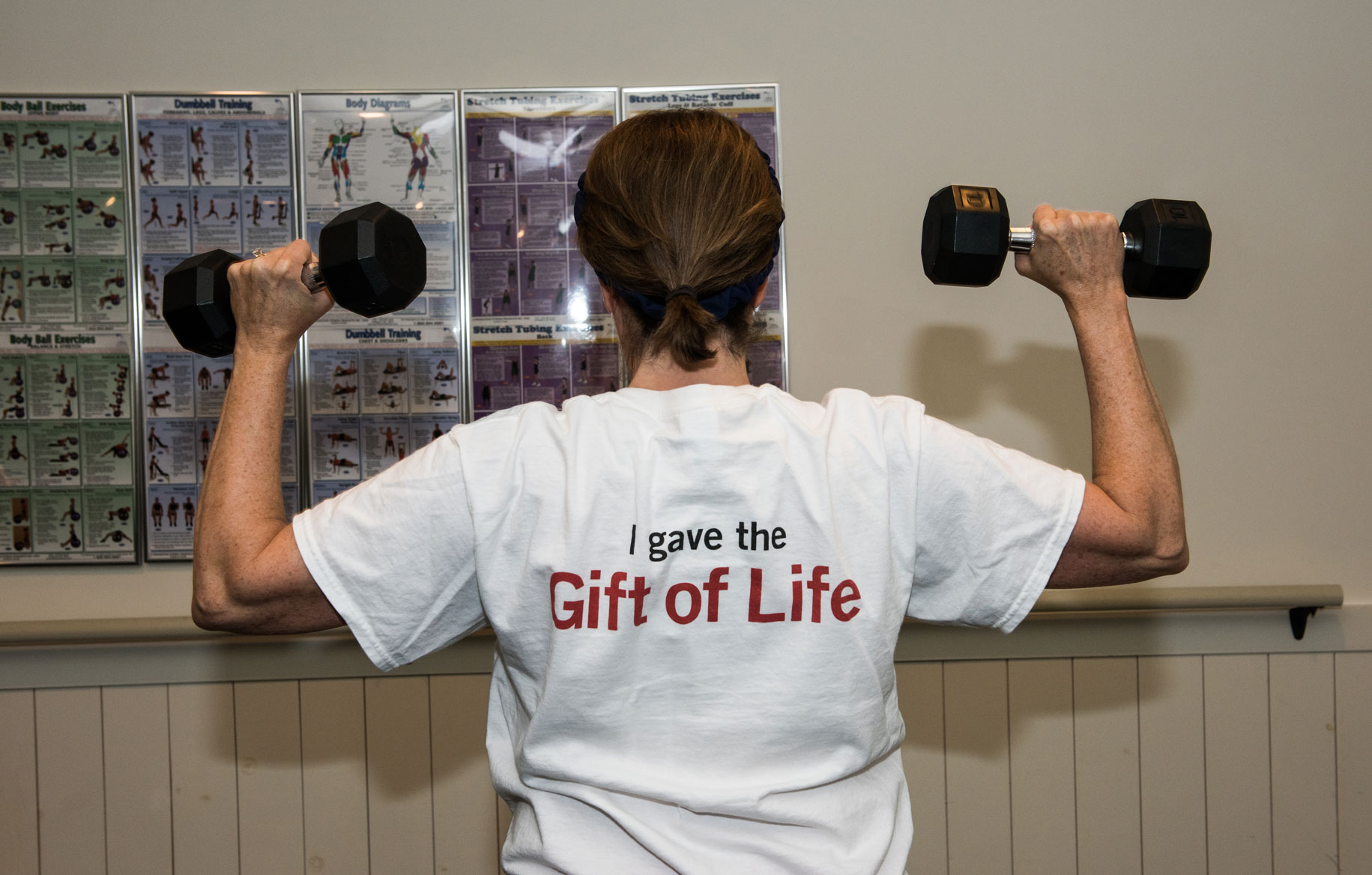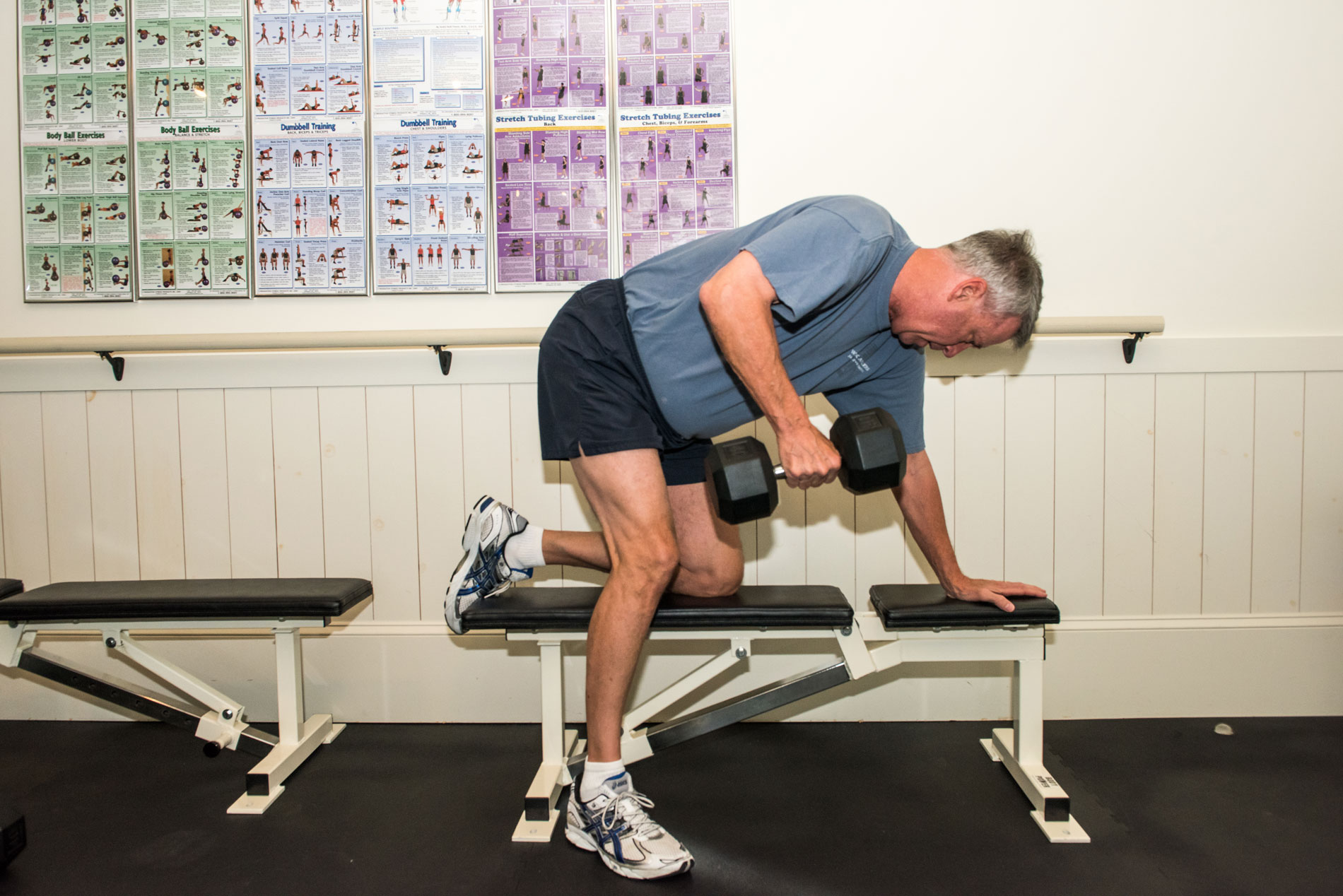It began with generosity and love. Lisa Raney’s husband, Ben, needed a kidney transplant, and she wanted to give him one of hers. It wasn’t that simple, but the experience changed the Raneys forever.
By Cindy Miller and Edward Miller | Photographs by John Glenn
Lisa Raney wanted to give her husband, Ben, the perfect gift. He wasn’t exactly the clichéd “man who has everything,” but he already had a lot. So, what did he really need?
How about a new kidney? The transplanted kidney Ben had lived with for 20 years was failing. What a generous, loving gift it would be if Lisa gave him one of hers.
The two had been married for 11 years, so they both had learned to live with the possibility, if not certainty, of a second transplant. Both were ready. Although several of Ben’s friends had stepped up to volunteer a kidney, none was a match.
Lisa went through all the interviews and tests at Piedmont Atlanta Hospital to determine whether her kidney would be compatible with Ben’s body.
“I so much wanted to be the donor,” says Lisa, an executive at a workplace-interiors company, Steelcase.
But it was not to be. Lisa was not a match. Because of his previous transplant and frequent exposures to blood products, Ben had built up antibodies that made it even more difficult to find a compatible donor the second time around. Although Lisa was an otherwise perfect donor candidate, the complexities of precise matching stood in the way.
“I was devastated,” she says. “I haven’t cried myself to sleep many times, but I did that night.” To the Raneys, it seemed simple. Lisa could not give Ben the precious gift she had intended.
Or could she? Was there another way Lisa could turn her generosity to good use?
From here on, the story gets complicated. Lisa did donate a kidney to someone who needed it, but not to Ben: Her kidney was removed a month and a half after Ben received his replacement from someone else.
How all this came about is a wonderful tale of beating illness, a couple’s love, and the inspiring stories that are created when many people decide to give back.
The story has been unfolding since 1995, when Ben’s body started sending signals that something was wrong. First came headaches, then nausea, followed by truly massive headaches. His blood pressure was through the roof, his vision blurred.
“I didn’t know what was happening, but knew it was time to pay serious attention,” Ben says.
Indeed it was. Kidney disease can creep up on you. Ben’s physician later called it “an indolent thing” in which the body gradually gets used to the pain so you don’t know how much it really hurts until it stops. Except, the pain didn’t stop. The next step for Ben was months of dialysis, which proved to be a temporary solution. In November 1995, at age 37, he got a kidney from the cadaver of a young man who had died in a car crash.
For 20 years or so, Ben faithfully took his medicine and went on with his second-chance life, thanks to what he called the “great success” in his abdomen.
Unfortunately, transplanted kidneys carry no lifetime guarantees. In 2015, some of the familiar symptoms returned, slowly at first, but it was soon clear they weren’t going away. This time, Ben and his physicians knew what to look for and what to do.
For Ben, by now the head of an Atlanta commercial real estate firm, a second transplant was a race against another course of dialysis. Here’s the dilemma: Kidney dialysis can save and prolong a life, but statistically, it’s a poor substitute for getting a kidney from a living donor. But donors can be hard to find. It often takes years to make a match, time the patient must usually spend on dialysis.
Traditionally, a transplant is thought of as a straight one-to-one exchange from a single donor to a single paired recipient. That’s what Lisa had in mind when she offered her husband a kidney.
A more common exchange, however, is the “domino chain.” In this method, hundreds of people enter a registry, some as donors, others as needy recipients. The biological variety inherent in the pool increases the chances of finding a computer-generated match between strangers located across the country, and in some cases, around the world.
A domino chain shortens the time it takes to make a match, a life-saving advantage. In Ben’s case, it enabled him to avoid a lengthy stretch of dialysis while waiting for a matching kidney. It also provided him with a living organ, another significant factor that improved his long-term prognosis.
Here’s how a chain works:
It begins with a kidney from an altruistic donor, someone willing to contribute an organ to a complete stranger. To receive that kidney, a recipient is required to arrange for another donor to contribute to the registry. That second donor’s kidney goes to another matching recipient in the registry who has recruited yet another donor. The chain ends when the latest donor is not a match for anyone in the registry. This last donor will instead give an organ back to the kidney waitlist of the transplant center that offered the altruistic kidney that launched the chain.
In the Raneys’ case, the chain began with the pledge of a kidney from an altruistic donor in Texas. That kidney was matched with a recipient in New Jersey, and the donor recruited by the New Jersey recipient provided the organ that was sent via Delta Air Lines to Ben in Atlanta.
Because Lisa had volunteered to be a donor on behalf of Ben, her kidney went to a third recipient in this chain — coincidentally, someone in Atlanta. Because the subsequent Atlanta donor’s kidney did not match anyone in the registry, the chain ended, and the Atlanta kidney was sent back to the source of the original kidney in Texas, where it went to the next person on the transplant list at that facility.
Each chain is as long as it needs to be in order to give each recipient a matching organ. It’s not uncommon for these chains to involve as many as 50 or 60 people. In the Raneys’ case, there were eight people in the chain.
Lisa’s gift was so precious because most patients do not have a donor in their life, which explains the long waiting list for kidneys from cadavers.
“Talk about a special gift,” Lisa says. “It meant so much to me to help Ben and another family, too.”
Because he’s had two transplants, Ben now has four kidneys. According to Dr. Jonathan Hundley, Ben’s surgeon, it’s more intrusive to take the old kidney out when a new one goes in. Keeping it there does no harm, and it actually continues to function for a time.
Getting a new kidney is an oddly refreshing feeling, Ben says.
“You wake up with tubes everywhere, but the new kidney is working instantly,” he says. “You’re like a car that just changed a filter and put in a new tank of gas. You feel like you’re having a cleansing shower from inside your body. Within a day, you feel fixed. Within a week, I was working out on the treadmill.”
A few months after his second kidney transplant, Ben, who went through Georgia Tech on a golf scholarship, was not only back on the golf course, he was competing at White Columns Country Club in Milton, Georgia, to qualify for the U.S. Senior Open. He was in contention until he made a bogey on the 18th hole. Despite that, he shot an even par 72.
It was a little different for Lisa. She doesn’t talk about a cleansing shower, but says the procedure wasn’t as bad as she expected. Her robotic surgery required four small incisions, two for instruments, two for cameras to guide them. A bag is placed around her kidney, which is about the size of her fist, and pulled out of one of the small incisions.
“After Ben’s surgery, the surgeons described his new kidney as ‘big and beautiful.’ I, of course, wondered what mine looked like,” Lisa says. “They called it ‘gorgeous.’ That made me feel better.”
After the surgery, Lisa was taken to the transplant floor at Piedmont Atlanta for 24 hours. In one of those it’s-a-small-world coincidences, waiting for her was nurse Celia Ivery, who had been one of Ben’s nurses after his surgery six weeks before.
“It was so comforting to be with people we knew,” Lisa says.
The Raneys have been through a lot. As Lisa’s surgeon, Dr. Harrison Pollinger, says: “Giving a kidney is a wonderful gift, but it’s not like dropping off some clothes at Goodwill.”
As a result, the Raneys share a deep sense of gratitude. “We feel blessed,” says Lisa, blessed enough to create a fund through the Piedmont Foundation to support another living donor coordinator.
That’s a significant gift, one that will add to Piedmont Healthcare’s ability to help others find the kidneys they need. The coordinators manage the whole process — the evaluation and matching of donors and recipients, plus other essential steps long before anyone enters the operating room.
The Raneys’ gift will help get people through the system faster. This is especially important for patients on dialysis, enduring long waits for a transplant.
“We want to promote the potential for living donors,” Lisa says. “Transplants from living donors are more effective, but identifying, educating, recruiting and processing donors take a lot of work. Ben and I believe that adding to the staff will increase the number of lives that can be saved.”
Last year, Piedmont Healthcare performed about 150 kidney transplants, 55 from living donors. As the capacity for planning and coordination expands, so will the efficiency of the system. Donor pools have remained steady over the last decade, but the demand for replacement organs has grown.
Their philanthropy has given the Raneys a cause. In addition to creating a fund, the Raneys take every opportunity to coach patients.
“We want to be a positive voice to those under stress of illness,” Lisa says. “It’s something we’re passionate about. We haven’t changed that much, but we don’t take our good health for granted.”
Ben is young enough that in 20 years or so he might need a third kidney transplant. Some Atlanta patients have had four transplants. But Lisa’s career as a donor is finished. She’s gladly given all she can.














